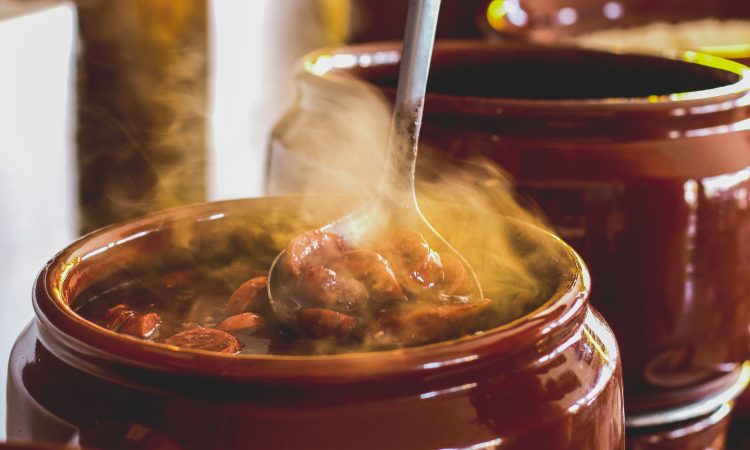Coffee; a popular elixir
Under the bright colors of Brazil, football, capoeira (martial art), samba, bossa-nova, caipirinha (national cocktail), and carnivals have kept the Brazilian culture alive for centuries. It is also unquestionable that it is the largest coffee producing country in the world.
A little history
It was at the beginning of the 18th century, when Brazil was still a Portuguese colony, that the very first coffee plant was introduced. At that time, the only area in South America where coffee was grown was French Guiana. You should know that this plant has never existed in its natural state in Latin America. The latter is originally from Africa, more precisely Ethiopia, which was therefore imported to the South American continent.
In 1726, the governor of the province of Grão Pará, wished to diversify his resources solely made up of sugar cane, entrusted a secret mission to a young soldier. This responsibility consisted in stealing coffee plants in Guyana for the cultivation on Brazilian land. The French settlers in Guyana, delighted to have this treasure in their possession, would obviously never have voluntarily sold coffee seeds to their border neighbor. It was then that the young missioned sergeant used his charms with the governor’s wife to obtain this precious resource.
It was a resounding success but was almost short-lived, however, as only one of the recovered coffee plants survived the return trip to Brazil. However, coffee production began near the city of Rio de Janeiro, in a monastery, where this surviving plant’s growth was patiently anticipated.
Unexpected health benefits
The last few years have been as rich in scientific information regarding its multiple health benefits as the variety of flavor that coffee can provide. Positive links have been made between coffee consumption, asthma, liver disease, cardiovascular disease, risk of Alzheimer’s disease and overall longevity. More precisely on this last point, caffeine is one of the natural molecules known to have a beneficial impact on metabolic pathways linked to primary aging. It seems that the health benefits of coffee are too numerous and too great to stem simply from an antioxidant or anti-inflammatory effect of its polyphenols. The molecules present in coffee are said to induce cellular maintenance and repair mechanisms that protect us from the effects of aging. However, we would like to highlight two conditions that require precautions regarding your coffee consumption: anxiety/sleep problems and high blood pressure.
Knowing very well that a morning cup of coffee is omnipresent in our lives; we have decided to offer you a recipe with this coveted ingredient with unsuspected anti-aging properties that Dr. Simard (www.esimard.com) has previously presented. We offer you a delicious Brazilian beef coffee recipe, that of which we suggest personalized vegetable combinations to make this dish even healthier.
Ingredients:
– 1 medium onion, finely chopped
– 2 to 3 tablespoons of olive oil
– 3 garlic cloves cut into thin slices or minced
– 3 cups of cubed stewing beef or top round steak
– 2 tablespoons of coconut oil or butter
– 1/4 cup of all-purpose flour
– 1 cup of dry red wine of your choice
– 2 cups of chilled strong coffee of your choice
– 1/2 teaspoon of fresh oregano, moderately chopped
– 1/2 teaspoon finely chopped fresh rosemary (without stems)
– 6 large Portobello mushrooms cut into six + 2 medium carrots cut into slices
(or)
1 medium unpeeled eggplant, diced + 1 large sweet potato, coarsely diced
(or)
2 cups of cooked black beans + 2 cups of small cauliflower florets
– Black or white pepper, and salt to taste
Steps:
- In an oven-safe pot, or even a casserole dish; sweat the onion over medium heat in olive oil. Brown your pieces of meat in a single layer for 10 minutes; your cubes don’t have to be very colorful, just a little brown is enough. Note that this recipe can be made entirely in the slow cooker, if you wish. Omit the flour and coconut oil for cooking in the slow cooker. On the other hand, incorporate all the other ingredients. This braising technique will take 6 to 8 hours at low temperature or 4 to 5 hours at high temperature.
- In your same cooking pot, once the meat is lightly seared, salt and pepper to taste, remembering to set it aside to rest for a bit. After the protein is removed, add the flour and coconut oil, or butter with the flour, while lowering the heat to medium. Then, stir everything in a clockwise direction, so that the flour forms a small clump. Above all, do not let the flour turn brown, as the latter could add bitterness to your dish.
- Now is the time to add the reserved meat, desired pair of vegetables, wine, coffee and herbs, bringing everything to a boil. Simmer for 30 to 35 minutes or until soft and tender.
- For serving, you can simply bring the saucepan to the center of the table, so that everyone can help themselves. In addition, we strongly recommend that you have cooked brown rice or whole wheat bread to absorb the sauce.
Enjoy your meal everyone! We hope this original recipe will be your new discovery. For next time, experiment with different kinds of strong coffee, and why not choose game meats or even turkey… Yum! Yum!
References:
- Ekmekcioglu C. Nutrition and longevity – From mechanisms to uncertainties. Crit Rev Food Sci Nutr. 2020;60(18):3063-3082.
- Kolb H, Kempf K, Martin S. Health Effects of Coffee: Mechanism Unraveled? Nutrients. 2020 Jun 20;12(6):1842.
- O’Keefe JH, DiNicolantonio JJ, Lavie CJ. Coffee for Cardioprotection and Longevity. Prog Cardiovasc Dis. 2018 May-Jun;61(1):38-42.
- Poole R, Kennedy OJ, Roderick P, Fallowfield JA, Hayes PC, Parkes J. Coffee consumption and health: umbrella review of meta-analyses of multiple health outcomes. BMJ. 2017 Nov 22;359:j5024.






